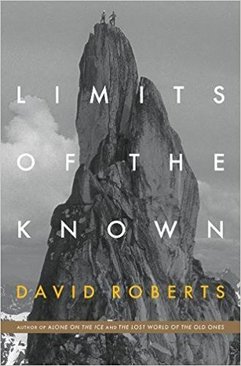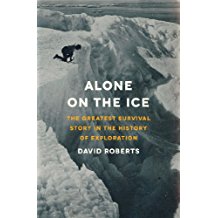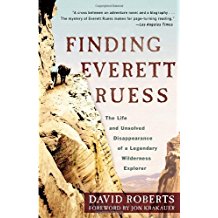Roberts was part of a young generation of climbers whose imaginations were captured by the successes of Himalayan climbing in the 1950s and '60s, capped by Edmund Hillary and Tenzing Norgay standing atop Mt. Everest in 1953. He sought out his own unexplored routes in Alaska and was on the team from Harvard that made the ascents of the 15,000-foot Wickersham Wall on Denali and the west face of Mount Huntington – two of the hardest Alaskan climbs at that time. My uncle, Dave Johnston, was on a team of climbers coming up the other side of Denali during that first climb. He described coming up to the pass hearing voices, wondering if he had imagined them (having been on their own for so long). The voices belonged to Roberts and the Wickersham team, who were excited to see other like-minded souls. They happily swapped stories and reading material and ascended the South Peak together. For these young adventurers, climbing peaks and seeking out places where others hadn’t yet been was as natural as it was for Mallory. Yet Roberts describes that “the idea that wilderness is beautiful, and the exploits performed there – climbing mountains, running rivers, backpacking long distances – are rewarding, even inspirational” was not the view held throughout most of human history. Roberts has fascinating chapters examining the climbing prowess of the lost civilizations of the Anasazi and the Tellem tribes in Mali. “To me, as a climber, the beauty and daring of the Anasazi achievement in the cliffs posed a beguiling conundrum. It is a perilous business to project motivation upon vanished peoples who left no written record, but it seemed completely unlikely that the Old Ones had been driven by the aesthetic passions of the men who made first ascents of the Matterhorn, the Eiger, and the Chamonix auguilles. Instead it was survival that drove the Anasazi to such extremes.” The need to achieve one’s place in history by being the "first" is a Western construct, beginning with races to conquer the Alps and reach the poles. The title of Robert’s latest, captivating book comes from the Norwegian polar explorer Fridtjof Nansen, who purposefully navigated a well-designed ship into the Arctic ice in an effort to ride the ice floes toward the pole, a treacherous place in the terra incognita of the map. Roberts maintains the rationale of these explorers was simply to further our knowledge. “That the North Pole, like the moon seven decades later, should have loomed as a profoundly worthwhile goal for a mission of discovery seemed self-evident to the crowds that lined the seacoast to hail their departure.” Nansen wrote of the “craving to get beyond the limits of the known” and would spend three years on his expedition, setting the new northernmost mark and then surviving a harrowing retreat back to civilization by ski, dogsled, kayak and waiting out another Arctic winter with only one companion. “The polar explorers of the 19th and early 20th centuries put us all to shame,” Roberts writes. Throughout “The Limits of the Known,” he describes the feeling of being born too late. Earlier adventurers had blank spaces on a map, whereas today, every square inch of Earth has been mapped. Yet, Roberts was able to seek out an incredible life of exploration in his day and has become our best transcriber of adventure narratives. From the classic writings of his own mountaineering feats and tragedies, to epic tales of survival, to seeking out past cultures, Roberts is at the pinnacle of writing and is an absolute inspiration to head out to seek your own adventure... “because it’s there.” – Nathan Child This review originally appeared in the Aspen Daily News on March 22, 2018
0 Comments
Your comment will be posted after it is approved.
Leave a Reply. |
Adult News & reviewsLibrary news, info about upcoming events, reviews of books and films, and a look at the topics that affect us as a library. Archives
July 2023
|
General |
Borrowing |
About |






 RSS Feed
RSS Feed
